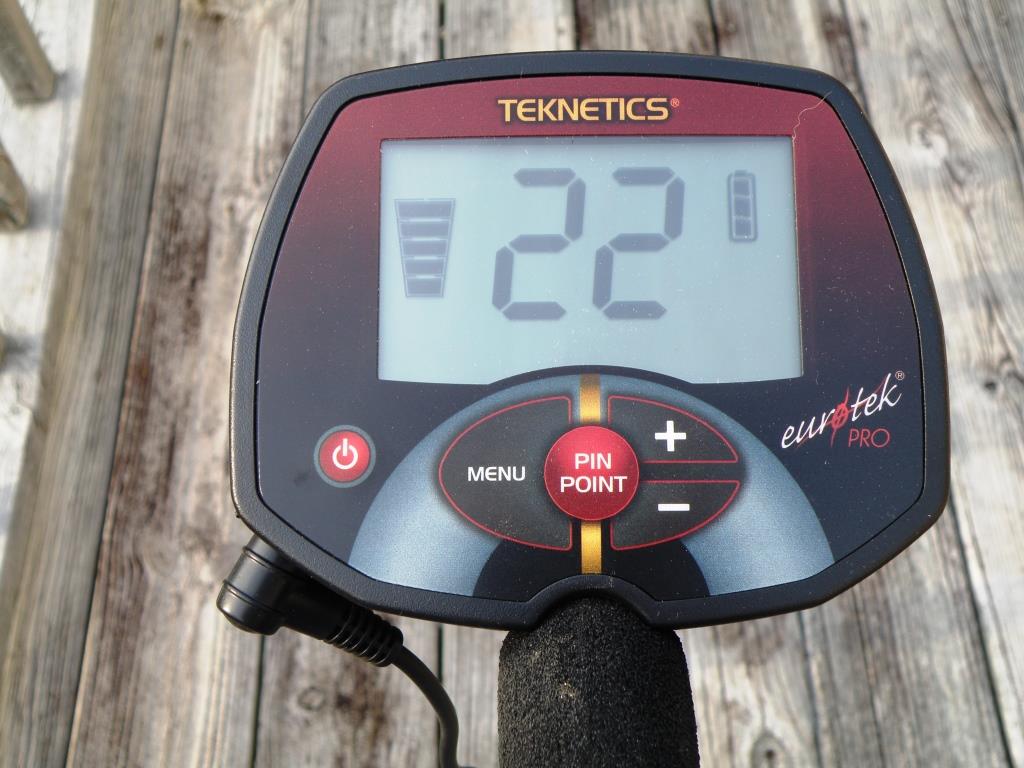*Used with permission of Fisher Labs*

David Johnson

Some metal detectors are “more sensitive” than others, and “how deep” a particular metal detector can detect a specific metal object depends on many variables.
“Air test sensitivity” refers to the maximum repeatable detection distance achievable in air using a standard metal test piece (typically a US nickel coin), with the searchcoil that’s standard with that model, in a location without electrical interference, the machine adjusted to just barely eliminate background chatter. If ground balancing is available on the machine, it must be done using ferrite. …….. A properly done “air test” provides an indication of a machine’s potential to “go deep” on buried coins. Because of interference from magnetic iron minerals in the ground, actual detection depth will usually be much less than what’s achieved in “air test”. (NOTE: for maximum depth on buried objects, search in the all-metals ground balanced mode, which is much less affected by iron minerals.)
“Sensitivity control” A control labeled “sensitivity”. It actually controls either gain or threshold, or a combination of both, depending on the machine. If both, the higher settings vary threshold and the lower settings vary gain.
“[Audio] threshold control” Determines the signal strength level corresponding to the threshold of audibility. A negative threshold setting is used to suppress signals by a fixed amount so that only signals stronger than that amount will be heard. Negative threshold settings are used to silence internal “circuit noise” and electrical interference. Machines which have no threshold control have an internal threshold which allows silent operation, or a control labeled “sensitivity” which actually controls threshold. …..Some models allow positive threshold settings. In most cases the positive range controls the loudness of a minimum detectable signal, a separate internal threshold determining what will or will not be detected.
“Gain control” This makes signals bigger or smaller. High gain settings make signals bigger, and therefore signals which were originally weaker can more easily exceed the audio threshold, and be heard. If the gain setting is too high, electrical interference or internal circuit noise may cause constant audio chatter. ….Lower gain settings reduce the size of signals, so that relatively weak unwanted signals (electrical interference, deep iron fragments, aluminum foil shreds, etc.) can be silenced.
The effects of discrimination “Discrimination” between different metal objects is done using a different set of signals than the ones used for detection. Since the overall purpose of discrimination is to eliminate response to certain classes of metal objects beginning with metallic iron, magnetic iron minerals in the ground will tend to make nonferrous metal signals look more like ferrous, increasing the probability of their being rejected by the discrimination circuit. Some machines provide data on the amount of iron mineralization, so with experience you can estimate the depth of effective detection and discrimination on that site.
Interactions between controls There are many types of discriminators, all of which have some effect on “air test sensitivity”. The most common pattern (nearly universal in older all-analog machines) is that “air test sensitivity” decreases slightly as discrimination is increased. Most of our recent designs do discrimination entirely in software, where control settings are actually data which don’t necessarily do the same things to signals that circuit components used to do. In the case of the T2 and F75, those differences were confusing to some users. In general if a T2 or F75 seems too noisy, the solution is to set the discrimination level to the iron range; and if that doesn’t do the job, also reduce the sensitivity setting. In the F70 and F5 which are more recent designs, the interactions between control settings and signals are even more complex, but we did a better job of hiding the details thereby giving the user an improved sense of predictability.
Electrical interference In many (probably most) machines, elimination of electrical interference is best achieved by setting the discrimination level to the top of the iron rejection range, then reducing the threshold setting (if threshold control is available; it may be labeled “sensitivity”). Even if the machine chatters in air, while actually in motion searching over the ground it will usually quiet down, except for occasional random pops which don’t sound like targets. (Frequency shifters found on some machines are beyond the scope of this essay.)
How much depth should I get? There is no single answer to that question. In a few places, you may get in-ground depth almost as good as in an air test. There are also a few places with so much iron or salt mineralization that most detectors are not even usable. In most soils, the best discriminators will usually detect coins to a depth of 7 inches or more, and will usually provide usable discrimination and target ID to a depth of 5 inches or more. However, a particular target may not be detected or may be misidentified because of the proximity of rocks or other metal targets, disturbed soil caused by digging, peculiarities of the target, or suboptimal user technique for that target in that setting. On sites where the discriminator doesn’t provide enough depth for your purposes, search in the all-metals ground balanced mode if the machine provides one.
Copyright First Texas Products and Fisher Labs File: sensitivity and depth last update 18 Sept 08

